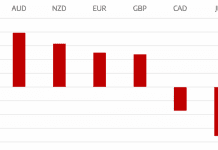Risk appetite illusion is a term that highlights the misconceptions and misunderstandings surrounding an organisation’s willingness to accept risk. Many people think they can clearly define how much risk they are prepared to take, but this is often not the case. This article explores the nuances of risk appetite and the factors that contribute to the illusion of having a defined risk appetite. We will also look into the challenges organisations face when trying to articulate their risk appetite and how this can impact decision-making and governance.
Key Takeaways
- Risk appetite is often confused with risk tolerance, leading to misunderstandings.
- Different stakeholders perceive risk differently, complicating consensus on risk appetite.
- Organisational culture significantly influences how risk appetite is viewed and defined.
- Clear communication about risk appetite is essential for effective decision-making.
- Addressing risk appetite illusion requires considering both qualitative and quantitative factors.
Understanding Risk Appetite Illusion
Definition of Risk Appetite
Risk appetite is often talked about, but what does it really mean? Simply put, it’s the level of risk an organisation is willing to accept in pursuit of its objectives. It’s not just about taking risks blindly; it’s about making informed decisions about which risks are worth taking and which aren’t. Think of it as a balancing act – weighing potential rewards against potential losses. A clearly defined risk appetite helps guide decision-making at all levels of the organisation.
- It sets boundaries for acceptable risk-taking.
- It informs strategic planning and resource allocation.
- It provides a framework for evaluating potential opportunities.
Distinction Between Risk Appetite and Risk Tolerance
People often confuse risk appetite with risk tolerance, but they’re not the same thing. Risk appetite is the overall level of risk an organisation is willing to accept, while risk tolerance is the acceptable variation around that level. Imagine risk appetite as the speed limit on a road and risk tolerance as the leeway you have to go slightly over or under that limit without getting a ticket. Understanding this difference is key to effective risk management. For example, M&A insurance advice can help companies understand their risk tolerance during mergers.
Common Misconceptions
There are several common misunderstandings about risk appetite that can lead to problems. One is the idea that risk appetite is a fixed, unchanging thing. In reality, it can change over time in response to changes in the business environment, the organisation’s strategy, or its financial condition. Another misconception is that risk appetite is solely a financial matter. While financial risks are important, organisations also need to consider other types of risks, such as reputational, operational, and compliance risks. Finally, some people think that risk appetite is something that can be easily defined and measured. However, defining risk appetite can be challenging, as it often involves subjective judgments and trade-offs.
Risk appetite isn’t just a number; it’s a reflexion of an organisation’s values, culture, and strategic priorities. It requires ongoing dialogue and adjustment to remain relevant and effective.
Factors Influencing Risk Appetite Illusion

Dynamic Influences on Risk Perception
Risk appetite isn’t static; it shifts. What seems acceptable today might be unthinkable tomorrow. These changes are often driven by external factors like market volatility or regulatory changes. But internal factors also play a big role. For example, a recent success might make an organisation more willing to take risks, while a failure could lead to risk aversion. Understanding these dynamic influences is key to avoiding risk appetite illusion. The psychology of risk perception is crucial here, as it explains how our biases and emotions affect our judgement.
Role of Stakeholder Perspectives
Different stakeholders often have different views on what constitutes acceptable risk. Shareholders might push for higher returns, even if it means taking on more risk. Employees, on the other hand, might prioritise job security and be more risk-averse. Regulators will focus on compliance and stability. Balancing these competing perspectives is a challenge. Ignoring any one group can lead to a distorted view of the organisation’s true risk appetite.
Impact of Organisational Culture
Organisational culture significantly shapes risk appetite. A culture that encourages open communication and learning from mistakes is more likely to have a realistic view of risk. Conversely, a culture that punishes failure or discourages dissent can lead to a risk appetite illusion. In such environments, people may be unwilling to voice concerns about potential risks, leading to a false sense of security.
A strong risk culture promotes transparency and accountability. It ensures that risk management is not just a compliance exercise but an integral part of decision-making at all levels.
Challenges in Defining Risk Appetite

Defining risk appetite sounds straightforward, but it’s often surprisingly tricky. It’s easy to get lost in abstract discussions that don’t translate into practical guidance. Let’s explore some of the reasons why pinning down risk appetite can be such a challenge.
Conceptual Problems in Risk Definition
One of the biggest hurdles is that people use the word "risk" in different ways. Some might think of it as an event, others as the impact of that event, and still others as the likelihood of it happening. This lack of a shared understanding makes it difficult to agree on what exactly is being discussed when setting risk appetite. Is it about individual risks, or an overall measure of risk for the entire organisation? Also, discussions often overlook existing controls, focusing instead on inherent risk, which doesn’t give a realistic view of how well the organisation manages risk.
It’s like trying to bake a cake when everyone has a different recipe. You might end up with something edible, but it probably won’t be what you intended.
Measurement Difficulties
Even if everyone agrees on what risk is, measuring it can be a nightmare. Risks have all sorts of consequences, some of which are hard to quantify on a common scale. How do you compare the financial impact of a data breach with the damage to your company’s reputation? Focusing solely on financial measures also ignores important factors like staff morale or the company’s social licence to operate. These omissions can lead to poor decisions and reduced value for stakeholders.
Here’s a table illustrating the difficulty:
| Risk Type | Measurable Metric | Difficulty |
|---|---|---|
| Financial Risk | Monetary Loss | Relatively Easy |
| Reputational Risk | Brand Perception | Difficult to Quantify |
| Operational Risk | Process Efficiency | Requires Complex Data Analysis |
| Compliance Risk | Regulatory Penalties | Dependent on External Factors |
Variability Across Stakeholder Groups
Different stakeholders often have different views on what level of risk is acceptable. What shareholders consider a reasonable risk for potential reward might be unacceptable to employees worried about job security. Achieving a consensus on risk appetite requires balancing these competing perspectives. This is where understanding risk tolerance becomes crucial. It’s not just about what risks the organisation wants to take, but also what risks it can take, considering the needs and expectations of all stakeholders.
Here are some points to consider:
- Shareholders may prioritise high returns, even with higher risk.
- Employees may prefer lower risk to protect their jobs.
- Customers may value stability and reliability over innovation.
- Regulators may focus on compliance and systemic stability.
The Process of Risk Appetising
Engaging Diverse Stakeholders
Getting everyone on the same page when it comes to risk isn’t always easy. Different departments, teams, and even individuals within an organisation can have wildly different views on what constitutes an acceptable level of risk. The first step in ‘risk appetising’ is to actively involve a wide range of stakeholders in the discussion. This means including people from various levels of the organisation, different departments, and even external parties like key suppliers or customers where appropriate. By bringing these diverse perspectives to the table, you can start to build a more complete and nuanced picture of the organisation’s overall risk landscape. It’s about making sure everyone’s voice is heard and considered.
Achieving Consensus on Risk Views
Once you’ve gathered input from a diverse group of stakeholders, the next challenge is to find common ground. This isn’t about forcing everyone to agree on every single risk, but rather about identifying the core principles and values that will guide the organisation’s risk management strategies. This often involves a series of workshops, discussions, and consultations to explore different perspectives and identify areas of alignment and disagreement. It’s important to create a safe and open environment where people feel comfortable sharing their views, even if they differ from those of others. The goal is to arrive at a shared understanding of the organisation’s risk appetite that reflects the collective wisdom of its stakeholders.
Balancing Different Risk Perspectives
Reaching a consensus doesn’t mean ignoring dissenting opinions. In fact, it’s often the differing viewpoints that provide the most valuable insights. The key is to find a way to balance these different perspectives and incorporate them into a coherent and consistent risk appetite statement. This might involve prioritising certain risks over others, setting different risk thresholds for different areas of the business, or developing mitigation strategies that address the concerns of all stakeholders. It’s a delicate balancing act, but one that is essential for ensuring that the organisation’s risk appetite is both realistic and effective. Understanding investment risk behaviour is crucial here.
It’s important to remember that risk appetite is not a static concept. It should be regularly reviewed and updated to reflect changes in the organisation’s environment, strategy, and performance. This ongoing process of engagement and dialogue is what ensures that the organisation’s risk appetite remains relevant and aligned with its overall goals.
Here are some key considerations when balancing different risk perspectives:
- Consider the potential impact of each risk on the organisation’s strategic objectives.
- Assess the likelihood of each risk occurring.
- Evaluate the effectiveness of existing controls in mitigating each risk.
- Take into account the views of all stakeholders, including those who may be most affected by the risk.
Implications of Risk Appetite Illusion

The risk appetite illusion can have far-reaching effects on an organisation, influencing everything from strategic choices to day-to-day operations. When an organisation operates under a false understanding of its true risk appetite, the consequences can be significant and often detrimental.
Consequences for Decision-Making
The risk appetite illusion can severely distort decision-making processes. When decision-makers believe they have a clear understanding of the organisation’s risk tolerance, they may make choices that are either overly conservative or excessively risky. This is especially true in situations involving decision-making under uncertainty, where the potential outcomes are difficult to predict. For example, a company might miss out on potentially lucrative opportunities because it incorrectly perceives its risk appetite as being lower than it actually is. Conversely, it might engage in ventures that expose it to unacceptable levels of risk, believing it has a greater capacity to absorb potential losses than it truly does.
Effects on Risk Management Strategies
Risk management strategies are only as good as the understanding of risk appetite that underpins them. If this understanding is flawed, the strategies themselves will be ineffective. This can manifest in several ways:
- Inadequate risk assessment: Risks may be misidentified or mis-evaluated, leading to a failure to prepare for potential threats.
- Ineffective risk mitigation: Mitigation strategies may be poorly designed or implemented, failing to adequately reduce the organisation’s exposure to risk.
- Misallocation of resources: Resources may be directed towards managing risks that are not aligned with the organisation’s true priorities, while more critical risks are neglected.
A flawed understanding of risk appetite can lead to a false sense of security, making the organisation more vulnerable to unexpected events and potentially catastrophic losses.
Influence on Organisational Governance
The risk appetite illusion can undermine organisational governance by creating a disconnect between the board’s stated risk preferences and the actual risks being taken by the organisation. This can lead to a breakdown in accountability and oversight, as senior management may be unaware of the true extent of the risks being assumed. The impact of risk on financial choices is significant. This is particularly problematic in highly regulated industries, such as finance, where regulators expect organisations to have a clear and well-defined risk appetite that is actively monitored and enforced. If the board is operating under a false impression of the organisation’s risk appetite, it will be unable to effectively fulfil its governance responsibilities.
Practical Approaches to Addressing Risk Appetite Illusion
It’s clear that risk appetite isn’t always what it seems. So, how do we tackle this illusion head-on? It’s about getting real, being clear, and making sure everyone’s on the same page. Let’s explore some practical steps.
Developing Clear Risk Appetite Statements
A well-defined risk appetite statement is the cornerstone of effective risk management. It shouldn’t be vague or full of jargon. Instead, it needs to be specific, measurable, achievable, relevant, and time-bound (SMART). Think of it as a guiding star, helping everyone understand what risks are acceptable and which ones aren’t. It’s also important to regularly review and update these statements to reflect changes in the business environment or strategic goals. For example, a risk appetite statement should address both the type and level of desirable risk, and firms may find it useful to specifically call out undesirable risks.
Utilising Qualitative and Quantitative Measures
Don’t rely solely on numbers. While quantitative measures like Value at Risk (VaR) and stress testing are useful, they don’t tell the whole story. Qualitative measures, such as expert opinions, scenario analysis, and stakeholder feedback, are equally important. A balanced approach provides a more holistic view of risk. Here’s a simple breakdown:
- Quantitative: VaR, stress test results, financial ratios.
- Qualitative: Expert judgement, surveys, workshops.
- Combined: Risk matrices, scenario planning.
Incorporating Ethical Considerations
Risk appetite isn’t just about financial gains or losses; it’s also about ethics. What risks are we willing to take that could harm our reputation, our employees, or the environment? These considerations should be front and centre when defining risk appetite. It’s about doing the right thing, even when it’s not the easiest or most profitable thing. Ethical considerations should shape operational and ethical boundaries at the level of organisational practise.
Ignoring ethical considerations can lead to significant long-term consequences, including reputational damage, legal liabilities, and loss of stakeholder trust. A robust risk appetite framework should explicitly address these ethical dimensions.
Case Studies on Risk Appetite Illusion
Examples from Financial Institutions
Financial institutions provide fertile ground for observing risk appetite illusion in action. Think about the 2008 financial crisis. Many banks believed they had a handle on their risk exposure, setting seemingly appropriate risk appetites. However, the reality was far from the truth. Complex financial instruments and a lack of understanding of interconnected risks led to a massive underestimation of potential losses. It wasn’t just about individual institutions; the entire system suffered from a collective illusion.
Consider these points:
- Over-reliance on quantitative models that failed to capture real-world complexities.
- Inadequate stress testing that didn’t account for extreme scenarios.
- A culture of chasing short-term profits at the expense of long-term stability.
The illusion stemmed from a combination of factors: flawed models, a lack of transparency, and a culture that prioritised profit over prudence. This ultimately led to catastrophic consequences for the global economy.
Lessons from Corporate Governance Failures
Corporate governance failures often highlight the dangers of risk appetite illusion. Take the case of Enron. The company’s board and senior management fostered a culture of aggressive risk-taking, pushing the boundaries of acceptable behaviour. Creative accounting practises masked the true extent of the company’s debt and liabilities, creating a false sense of security.
Key takeaways include:
- The importance of independent oversight and a strong internal control environment.
- The need for transparency and accurate financial reporting.
- The dangers of a ‘tone at the top’ that encourages unethical behaviour.
Insights from Risk Management Practises
Even with well-defined risk management frameworks, organisations can fall victim to risk appetite illusion. This often happens when risk assessments are based on incomplete or biassed information. For example, a company might underestimate the likelihood of a cyber attack or fail to account for the potential impact of a regulatory change. The problem isn’t necessarily the absence of risk management processes, but rather their ineffective implementation.
Here’s a table illustrating potential pitfalls:
| Pitfall | Description |
|---|---|
| Data Bias | Relying on historical data that doesn’t accurately reflect current risks. |
| Groupthink | Suppressing dissenting opinions and conforming to the prevailing view. |
| Overconfidence | Overestimating one’s ability to manage risks effectively. |
| Lack of Scenario Planning | Failing to consider a wide range of potential outcomes. |
In Summary
In conclusion, the concept of risk appetite illusion highlights the complexities and misconceptions surrounding how we perceive and manage risk. It’s clear that our understanding of risk is often clouded by personal biases and varying interpretations among different stakeholders. This can lead to unrealistic expectations and decisions that may not align with the actual risk landscape. By acknowledging these challenges, organisations can strive for a more nuanced approach to risk management, one that considers diverse perspectives and the inherent uncertainties involved. Ultimately, fostering open discussions about risk can help bridge the gap between perception and reality, leading to more informed decision-making.
Frequently Asked Questions
What is meant by risk appetite?
Risk appetite is the level of risk that an individual or organisation is willing to accept when trying to achieve their goals.
How does risk appetite differ from risk tolerance?
Risk appetite is about the amount of risk one is ready to take on, while risk tolerance refers to the specific limits of risk one can handle.
Why is understanding risk appetite important?
Knowing your risk appetite helps in making better decisions and managing risks more effectively.
What are some common misunderstandings about risk appetite?
Many people think risk appetite can be precisely defined, but it is often influenced by personal experiences and changing situations.
How can organisations measure their risk appetite?
Organisations can measure risk appetite by using a mix of qualitative and quantitative methods to assess their willingness to take risks.
What challenges do organisations face in defining their risk appetite?
Defining risk appetite can be tricky because people have different views on what risk means, and it can change based on many factors.

Peyman Khosravani is a global blockchain and digital transformation expert with a passion for marketing, futuristic ideas, analytics insights, startup businesses, and effective communications. He has extensive experience in blockchain and DeFi projects and is committed to using technology to bring justice and fairness to society and promote freedom. Peyman has worked with international organizations to improve digital transformation strategies and data-gathering strategies that help identify customer touchpoints and sources of data that tell the story of what is happening. With his expertise in blockchain, digital transformation, marketing, analytics insights, startup businesses, and effective communications, Peyman is dedicated to helping businesses succeed in the digital age. He believes that technology can be used as a tool for positive change in the world.




































